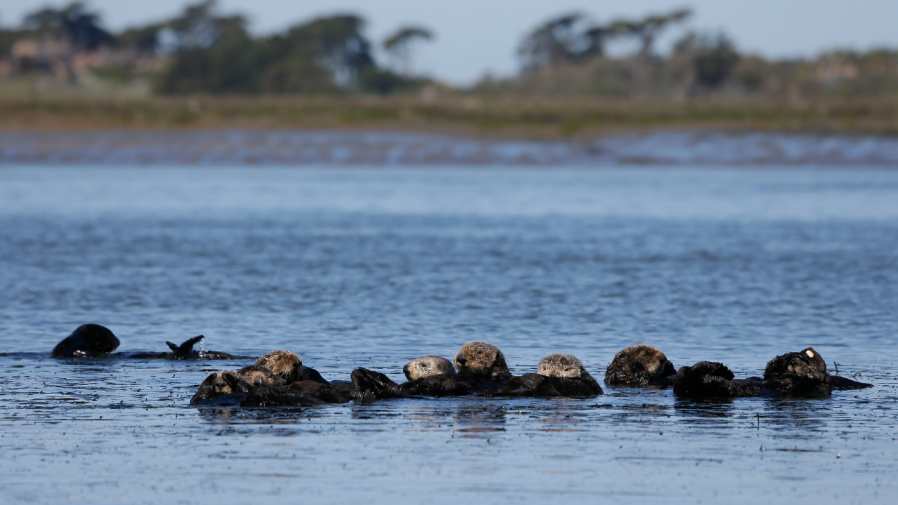California sea otters killed by rare parasite strain: study

An unusually virulent type of toxoplasmosis is killing California sea otters — and may pose an eventual public health threat to other marine animals and to humans, a new study has found.
This deadly disease, thus far identified in four stranded otters, comes from a rare strain of the microscopic parasite Toxoplasma gondii, according to the study published Wednesday in Frontiers in Marine Science.
While toxoplasmosis is common in sea otters and can be fatal, the authors stressed that this form appears to be especially vicious and capable of swiftly killing healthy adult animals.
Because this strain of Toxoplasma has never been detected on California’s coast before, the researchers are assuming that it is a recent arrival.
As such, they expressed concerns about potential contamination of the environment and the marine food chain — warning that such circumstances could pose a public health risk. Thus far, however, no infections have been reported in humans.
“The appearance of this lethal type of Toxoplasma in coastal California is concerning for two main reasons,” study co-author Devinn Sinnott, of the University of California Davis School of Veterinary Medicine, said in a statement.
These concerns involve the “potential population health impacts on a threatened species” and the parasite’s ability to “affect the health of other animals that are susceptible to Toxoplasma infection,” Sinnott explained.
The four sea otters examined in the study stranded between 2020 and 2022 all presented with a condition called “steatitis,” or severe inflammation of their body fat.
Sea otters are vulnerable to Toxoplasma infection because they live near the coastline and can be exposed to the parasite’s eggs through storm runoff and by eating marine invertebrates that can concentrate the parasites, the authors explained.
But the emergence of severe steatitis is “a very unusual finding” in sea otters that develop toxoplasmosis, the scientists noted.
DNA testing identified the rare strain of Toxoplasma, called COUG, in all four stranded otters, according to the study. This strain was first found in 1995 in Canadian mountain lions.
“This was a complete surprise,” senior author Karen Shapiro, of the UC Davis School of Veterinary Medicine, said in a statement.
“The COUG genotype has never before been described in sea otters, nor anywhere in the California coastal environment or in any other aquatic mammal or bird,” Shapiro added.
All four otters stranded during high coastal rainfall periods, meaning they could have been exposed to Toxoplasma eggs in storm runoff, according to the study. Three of the four otters were adult females within about 16 miles of each other in San Luis Obispo County, while one was an immature male stranded in Santa Cruz County.
Corresponding author Melissa Miller, of the California Department of Fish and Wildlife, said in a statement that she has been studying Toxoplasma infections in sea otters for 25 years and has “never seen such severe lions or high parasite numbers.”
She warned that because Toxoplasma can infect any warm-blooded animal, it could also potentially lead to disease in animals and humans who share the same environment or food resources. Some such foods include mussels, clams, oysters and crabs that are raw or undercooked.
“Because this parasite can infect humans and other animals, we want others to be aware of our findings, quickly recognize cases if they encounter them and take precautions to prevent infection,” Miller said.
“We encourage others to take extra precautions if they observe inflamed systemic fat deposits in sea otters or other marine wildlife,” she added.
For the latest news, weather, sports, and streaming video, head to The Hill.

